Laity Elementary School in Maple Ridge BC was a hotspot for discussion in December about the health concerns of students in classrooms with WIFI routers. A large cellular phone tower was then constructed behind the school on farmland. A farmer that lives close to the tower does not recall ever receiving a letter about this tower and was not happy to find out it was going to be so close to their farm. A resident on the south side of the farm was also alarmed when they found out about this tower. City Hall investigated to find out exactly who was consulted about this tower back in 2008. There is now concern about the future health of residents in the area, plus the various farm animals, bees, and wildlife. bclocalnews.com. The paperwork filed with City Hall indicated this tower would have 3 racks of antennas, however 4 were installed. The company who installed it claims they followed all the rules, and the microwave tower is “safe”.
Further information below regarding the consultation process of cell towers, and City Hall’s concern about potential health effects from cell towers.
Photos on Dec 29 2010

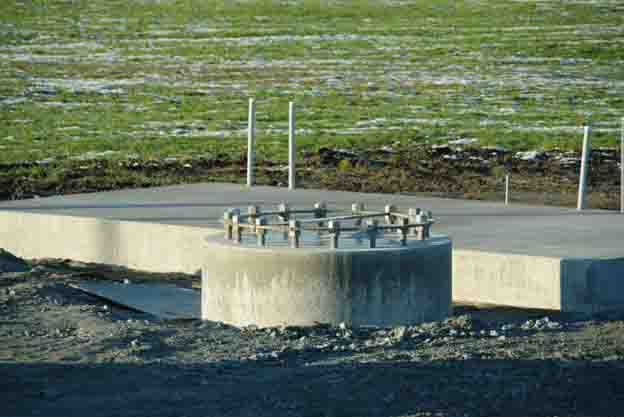
Photos on Jan 17 2011
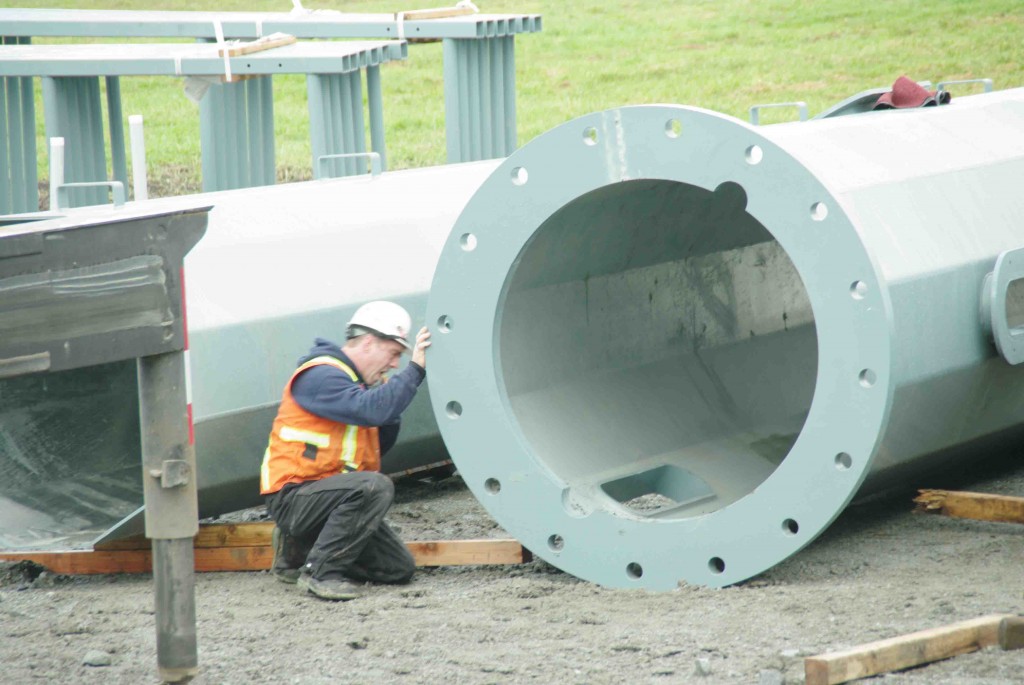
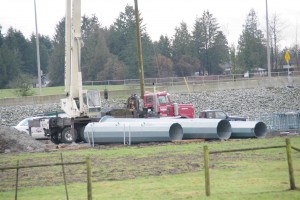
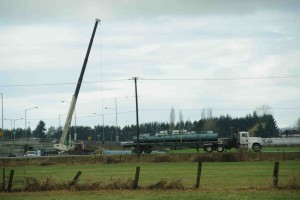
Deer runs across field from Laity farm the morning the tower goes up – view full size image

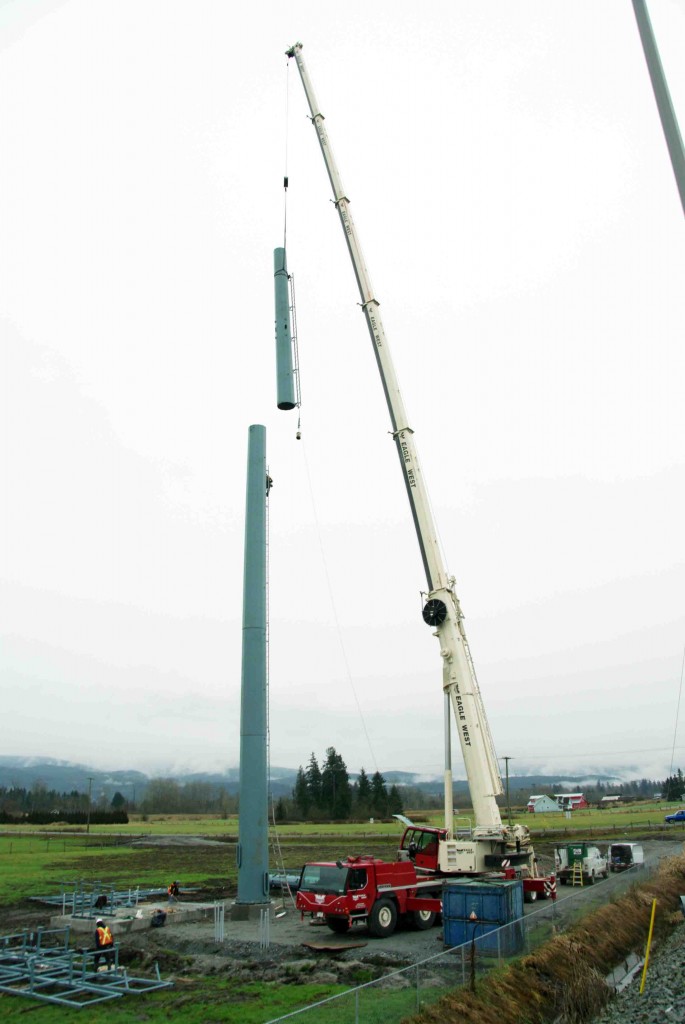

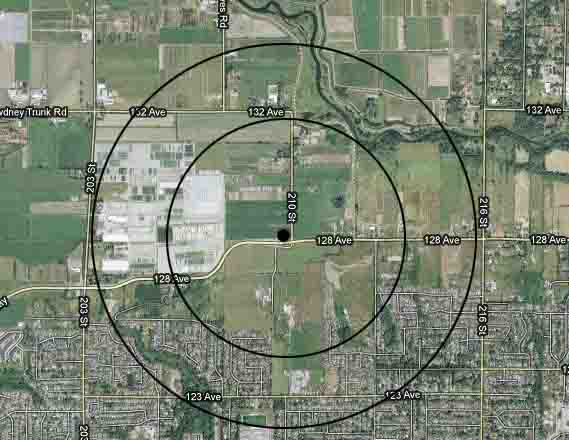
http://www.ic.gc.ca/eic/site/smt-gst.nsf/eng/sf08788.html
Industry Canada – Frequently Asked Questions
1. How will I know if a new antenna tower is being proposed for installation in my neighbourhood, and how can I share my views?
Anyone planning to install an antenna tower must follow the procedures of localland-use authorities, which may include a requirement to notify local residents. If aland-use authority does not have any procedures in place, then Industry Canada’s procedures must be followed. This can include written notification to residents and groups within a radius of three times the height of the proposed structure.
Citizens having questions or comments about proposed antenna towers can make their views known through the consultation process. More information on procedures can be found on Industry Canada’s website at www.ic.gc.ca/antenna.
•••••••••••••••••••••••••••••••••••••••••••••••••••••••••••••••••••••••••••••••••••••••••••••••••••••••••••••
Does this City Hall consider the Health Effects from Cell Towers ?
In fact they do mention it in previous meetings of other proposed cell towers in the district.
•••••••••••••••••••••••••••••••••••••••••••••••••••••••••••••••••••••••••••••••••••••••••••••••••••••••••••••
4.4 Cellular Antenna, 21311 Lougheed Highway
Staff report dated January 15, 2007 providing information on an application by Bell Mobility to install a monopole for wireless communications.
The General Manager, Public Works and Development Services advised that applications for wireless communication towers are approved and regulated federally through an Industry Canada process.
A public process is undertaken and the application is therefore brought before Council for comment. He reported that objections from the municipality can be forwarded to Industry Canada.
R/08-006
Bell Canada
Cellular Antenna It was moved and seconded
Application
That the staff report dated January 15, 2008, titled “Cellular
Antenna, 21311 Lougheed Highway” be received for information
CARRIED
Council Workshop Minutes
January 21, 2008
Page 5 of 7
R/08-007
That a letter be sent to Industry Canada drawing attention to the need for improvements to the aesthetics of the proposed monopole,
possible health effects and potential interference
of microwaves from the cellular antenna with Maple Ridge Hospital Equipment.
•••••••••••••••••••••••••••••••••••••••••••••••••••••••••••••••••••••••••••••••••••••••••••••••••••••••••••••
•••••••••••••••••••••••••••••••••••••••••••••••••••••••••••••••••••••••••••••••••••••••••••••••••••••••••••••
District of Maple Ridge COUNCIL WORKSHOP
April 14, 2008
The Minutes of the Municipal Council Workshop held on April 14, 2008 at 10:30 a.m.
in the Blaney Room of the Municipal Hall, 11995 Haney Place, Maple Ridge, British
Columbia for the purpose of transacting regular Municipal business.
PRESENT
Elected Officials Appointed Staff
Mayor G. Robson J. Rule, Chief Administrative Officer
Councillor E. Daykin M. Murray, General Manager of Community Development,
Councillor J. Dueck Parks and Recreation Services
Councillor A. Hogarth P. Gill, General Manager Corporate and Financial Services
Councillor L. King J. Leeburn, Executive Director
Councillor C. Speirs C. Marlo, Manager of Legislative Services
Councillor K. Stewart A. Gaunt, Confidential Secretary
Other Staff as Required
J. Pickering, Director of Planning
G. Manson, Manager of Communications
S. Blue, Manager of Economic Development
A. Wood, Municipal Engineer
D. Hall, Planner
J. Bastaja, Chief Information Officer
4.4 Cellular Antenna/Agricultural Land Commission Request for Comment,
12591 209 Avenue
…That the staff report dated April 9, 2008 be forwarded to the
Agricultural Land Commission as commentary on the proposed utility use application; and further
That the Agricultural Land Commission take into account Council’s concerns relating to the proposed utility use
application in terms of the effect on farmland,
the visual impact, the possibility of screening and reducing the visual impact,
farming implications and the adequacy of theneighbourhood consultation process.
CARRIED
•••••••••••••••••••••••••••••••••••••••••••••••••••••••••••••••••••••••••••••••••••••••••••••••••••••••••••••
Radiocommunication and Broadcasting Antenna Systems CPC-2-0-03
4.1 Land-use Authority Consultation
Industry Canada believes that any concerns or suggestions expressed by land-use authorities are
important elements to be considered by proponents regarding proposals to install, or make changes to,
antenna systems. As part of their community planning processes, land-use authorities should facilitate
the implementation of local radiocommunication services by establishing consultation processes for the
siting of antenna systems. Unless the proposal meets the exclusion criteria outlined in Section 6, proponents must consult with the
local land-use authority(ies) on any proposed antenna system prior to any construction with the aim of:
• discussing site options;
• ensuring that local processes related to antenna systems are respected;
• addressing reasonable and relevant concerns (see Section 4.2) from both the land-use authority and the
community they represent; and
• obtaining land-use authority concurrence in writing. Land-use authorities are encouraged to establish reasonable, relevant, and predictable consultation
processes2 specific to antenna systems that consider such things as:
• the designation of suitable contacts or responsible officials;
• proposal submission requirements;
• public consultation;
• documentation of the concurrence process; and
• the establishment of milestones to ensure consultation process completion within 120 days.
Where they have specific concerns regarding a proposed antenna system, land-use authorities are
expected to discuss reasonable alternatives and/or mitigation measures with proponents.
Under their processes, land-use authorities may exclude from consultation any antenna system
installation in addition to those identified by Industry Canada’s own consultation exclusion criteria
(Section 6). For example, an authority may wish to exclude from public consultation those installations
located within industrial areas removed from residential areas, low visual impact installations, or certain
types of structures located within residential areas.
Industry Canada is available to assist land-use authorities in the development of local processes. In addition, land-use
authorities may wish to consult Industry Canada’s guide for the development of local consultation processes.
page 4
•••••••••••••••••••••••••••••••••••••••••••••••••••••••••••••••••••••••••••••••••••••••••••••••••••••••••••••
Bees
http://www.hese-project.org/hese-uk/en/issues/nature.php?id=bees
http://www.westallisnow.com/userstoriessubmitted/40808987.html
” Dr Kuhn has published many articles about the effects of electromagnetic radiation on bees,
going back to 1998. It seems this may not be new research after all.”
•••••••••••••••••••••••••••••••••••••••••••••••••••••••••••••••••••••••••••••••••••••••••••••••••••••••••••••
http://media.journalinteractive.com/images/cellcluster.jpg
Are Cell Phones Towers killing our bees?
Scientists claim radiation from cell phones and towers are to blame for mysterious “colony collapse” of bees
By Geoffrey Lean and Harriet Shawcross Sunday, 15 April 2007
It seems like the plot of a particularly far-fetched horror film. But some scientists suggest that our love of the mobile phone could cause massive food shortages, as the world’s harvests fail.
They are putting forward the theory that radiation given off by mobile phones and other hi-tech gadgets is a possible answer to one of the more bizarre mysteries ever to happen in the natural world – the abrupt disappearance of the bees that pollinate crops. Late last week, some bee-keepers claimed that the phenomenon – which started in the US, then spread to continental Europe – was beginning to hit Britain as well.
The theory is that radiation from mobile phones interferes with bees’ navigation systems, preventing the famously home loving species from finding their way back to their hives. Improbable as it may seem, there is now evidence to back this up.
Colony Collapse Disorder (CCD) occurs when a hive’s inhabitants suddenly disappear, leaving only queens, eggs and a few immature workers, like so many apian Mary Celestes. The vanished bees are never found, but thought to die singly far from home. The parasites, wildlife and other bees that normally raid the honey and pollen left behind when a colony dies, refuse to go anywhere near the abandoned hives.
The alarm was first sounded last autumn, but has now hit half of all American states. The West Coast is thought to have lost 60 per cent of its commercial bee population, with 70 per cent missing on the East Coast.
CCD has since spread to Germany, Switzerland, Spain, Portugal, Italy and Greece. And last week John Chapple, one of London’s biggest bee-keepers, announced that 23 of his 40 hives have been abruptly abandoned.
Other apiarists have recorded losses in Scotland, Wales and north-west England, but the Department of the Environment, Food and Rural Affairs insisted: “There is absolutely no evidence of CCD in the UK.”
The implications of the spread are alarming. Most of the world’s crops depend on pollination by bees. Albert Einstein once said that if the bees disappeared, “man would have only four years of life left”.
No one knows why it is happening. Theories involving mites, pesticides, global warming and GM crops have been proposed, but all have drawbacks.
German research has long shown that bees’ behaviour changes near power lines. Now a limited study at Landau University has found that bees refuse to return to their hives when mobile phones are placed nearby. Dr Jochen Kuhn, who carried it out, said this could provide a “hint” to a possible cause.
Dr George Carlo, who headed a massive study by the US government and mobile phone industry of hazards from mobiles in the Nineties, said: “I am convinced the possibility is real.”
•••••••••••••••••••••••••••••••••••••••••••••••••••••••••••••••••••••••••••••••••••••••••••••••••••••••••••••
http://www.newscientist.com/blog/environment/2007/04/are-cellphones-wiping-out-bees.htm
Are cellphones wiping out bees?
The bizarre and sudden vanishing of bees that started in the US, and has now spread to Europe, has left apiarists stumped as to the cause. Now, researchers in Germany have come up with an explanation that, in the absence of a better theory, will probably be seriously considered : cellphones.
Radiation from mobile phones is interfering with bees’ navigation systems, preventing the insects from finding their way back to the hive, according to a preliminary study by Jochen Khun’s team at Landau University in Germany.
If it is true, it’s difficult to know what can be done about it, since cellphones are now so ubiquitous. But colony collapse disorder (CCD), as the mystery bee demise is known, is a serious problem, with as many as 80% of bees affected in some parts of the US. It occurs when all the hive’s occupants suddenly disappear (nobody knows where) leaving just the queen, her eggs and a few immature workers. And it has huge implications for agriculture because bee-performed pollination is vital for most of the world’s crops.
Previous studies have shown that bees’ behaviour changes near power lines, although the areas around power lines also provide an untouched haven for the creatures.
What’s to be done ? any suggestions?
Gaia Vince, Environment editor
•••••••••••••••••••••••••••••••••••••••••••••••••••••••••••••••••••••••••••••••••••••••••••••••••••••••••••••
Articles from today’s Sunday Times newspaper.
The Sunday Times
April 29, 2007
‘Phone mast link to lost sparrows’
Daniel Foggo and John Elliott
SPARROWS may be disappearing from British gardens because of radiation from mobile phone masts, according to a new study.
Electromagnetic energy from the masts may be disrupting the birds’ navigational systems, discouraging them from inhabiting areas with high numbers of the masts.
The researchers believe the pulses may also create an electrical charge in the birds’ feathers, leading to a change in their behaviour.
The new study could help solve the mystery of why the previously plentiful birds have now vanished from many gardens and hedgerows.
Britain’s population of sparrows peaked at about 13m pairs in the 1970s, but is now put at less than half that.
Other reasons previously suggested for the decline include changes in farming and loss of urban habitat.
The new research was carried out by Joris Everaert and Dirk Bauwens at the Research Institute for Nature and Forest in Belgium.
Their study, in 150 locations, showed that the stronger the signal from base stations, the fewer sparrows were found in an area.
The report, published in Electromagnetic Biology and Medicine, supports the notion that “long-term exposure to higher levels of radiation negatively affects the abundance or behaviour of house sparrows”.
The research follows a recent study suggesting the collapse of bee colonies in America could be related to electromagnetic radiation from mobile networks. In Britain, there are 47,000 phone masts.
Ingrid Dickenson, a researcher into electromagnetic pollution, said the research was plausible. “Birds’ sense of navigation is affected by this kind of radiation as they carry magnetised crystals in their brains,” she said.
The Royal Society for the Protection of Birds welcomed the study, but a spokesman for the British Trust for Ornithology said: “I can’t think of any reason mobile phone masts would affect them.”
Further concerns over wireless technology were raised yesterday when a government adviser warned children should not place computers on their laps when using Wi-Fi internet connections.
Professor Lawrie Challis said this would be a sensible precaution until more was known on the long-term effects of the technology.
Another study advised against siting homes and schools near power pylons because of the possible risk of illness, particularly childhood leukaemia.
Germany – Cows exposed to Antennas (PDF)
Italy – Animals deformed from Microwave Antennas
http://www.youtube.com/watch?v=T6N40k87lug
Cows, Chickens, Birds, Dogs – Deformed or found Dead from Microwave Antennas
http://www.youtube.com/watch?v=aIxcJsWS0ME
Beyond Coincidence
http://www.electricalpollution.com/Beyond_Coincidence.html
What about the effects on plants? Food crops?
•••••••••••••••••••••••••••••••••••••••••••••••••••••••••••••••••••••••••••••••••••••••••••••••••••••••••••••
Maple Ridge News – 2008
The District of Maple Ridge is looking into having a proposed 45-meter tall cell phone tower disguised as a giant fake pine tree. Cascadia Tower Inc. wants to put up a monopole-type tower in the middle of an open grass field, south of 128th Avenue and 209th Street, near the new Abernethy Connector.
Because the proposed site is part of the Agricultural Land Reserve, before the tower can be built, Cascadia Tower must first obtain approval from the Agricultural Land Commission and get a building permit from Maple Ridge. On Monday, council voted to ask the Agricultural Land Commission to consider the visual impact of the tower, as well as its implications on farming, before granting approval.
Mayor Gordy Robson noted at the workshop meeting on Monday morning that in Dubai, cellphone towers are disguised as fake palm trees and suggested the ALC look into the possibility of requiring the disguising the tower. “To disguise a [45-meter] tower will be a challenge,” said Coun. Ken Stewart. But because the tower would be located in the middle of an open field and visible for kilometers in every direction, there would be little benefit in trying to camouflage it, said Morrie Finn, site development manager for Cascadia Tower. “It would stick out like a sore thumb,” he said.
Cascadia Tower recently had plans for a 42-meter cellphone tower in Tsawwassen designed to look like giant pine tree, but the project was scuttled after residents concerned about the potential health hazards convinced the property-owner to pull out of the deal.
Finn said residents there whipped up into a frenzy by a lot of false information. “There are no studies proving [these towers] cause any ill health effects,” he said. “We operate within Health Canada guidelines.” Finn added that there are similar base stations on top of more than a dozen hospitals in the Lower Mainland. Cascadia Tower contacted all residents within a 300-meter radius of the tower site, he said, and no one had an issue with it. “The only response we got was from a farmer who wanted to know why we didn’t contact him first [to put the tower on his land], because he wanted the revenue,” said Finn.
Find this article at:
http://www.bclocalnews.com/tri_city_maple_ridge/mapleridgenews/news/17918254.html
•••••••••••••••••••••••••••••••••••••••••••••••••••••••••••••••••••••••••••••••••••••••••••••••••••••••••••••
According to Maple Ridge Pitt Meadows News, there have been other residents in Maple Ridge that were not contacted about cell towers
Click here to read this at full size
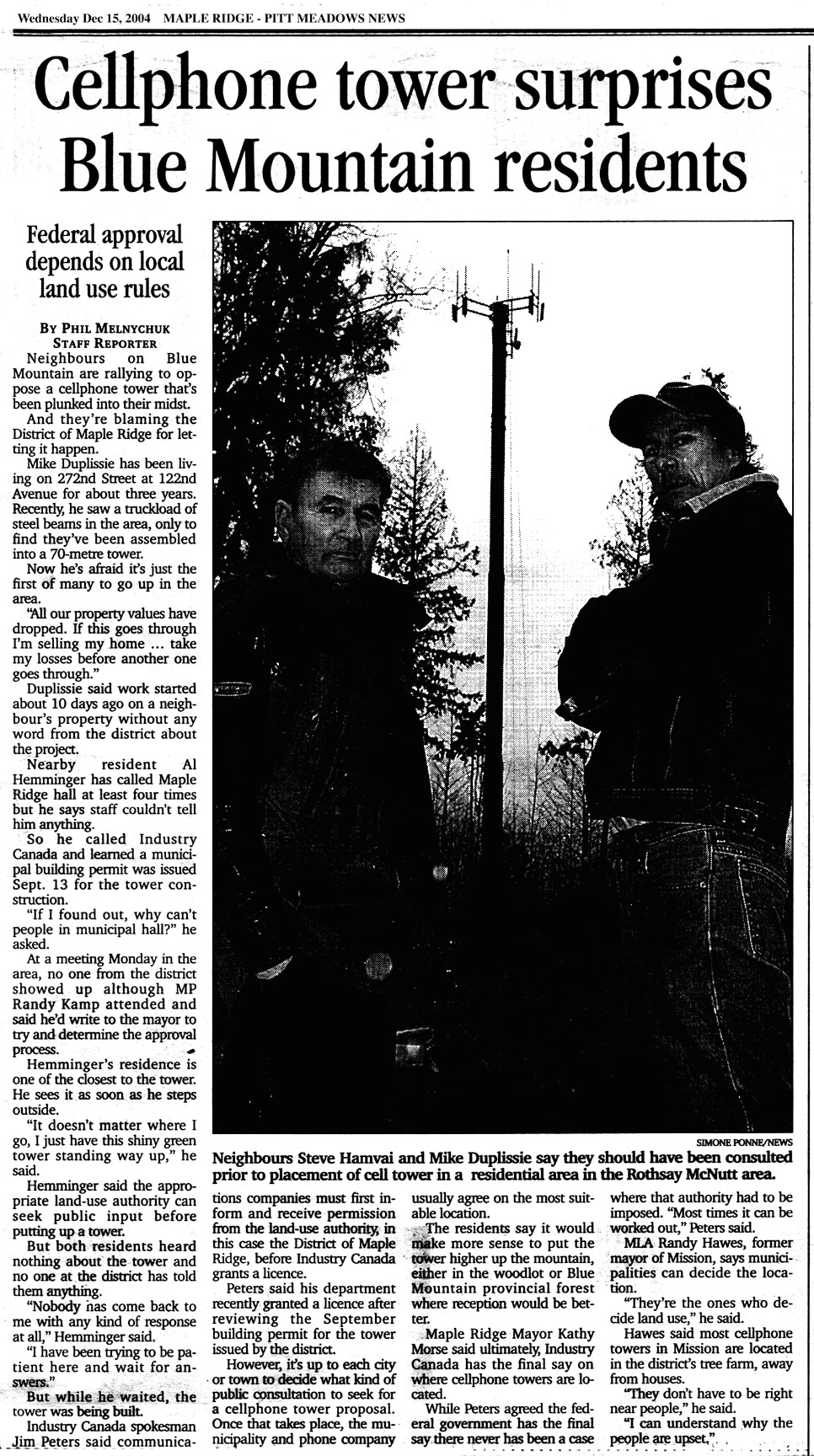
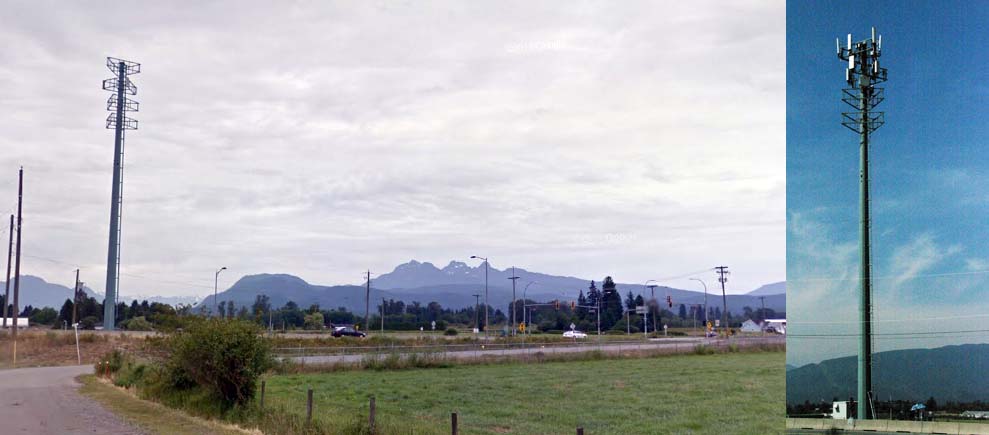

#1 by admin on June 23, 2018 - 11:29 am
According to local residents, Additional cell phone carriers added in Fall 2017, and more Antennas added in June 2018.
#2 by Robert Riedlinger on July 16, 2018 - 11:54 am
There is NO DOUBT, cell towers and other broadcast towers can cause adverse health effects. I found that out while living near a tower back in 1996,It has left me HYPER SENSITIVE to EMF and this makes my life MISSERABLE. We need a government that looks after people’s health, which we do not have in Canada !!!
Pingback: Telus defacing Beautiful BC « EMR Health Alliance of BC